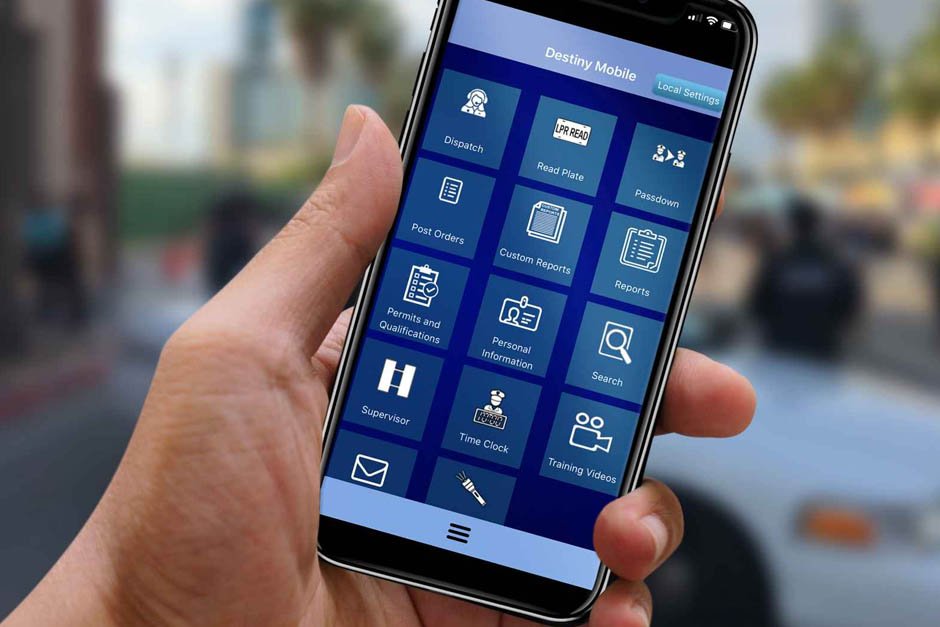In an era defined by technological progress, industries across the board have witnessed transformative shifts, and the realm of patrol software technology is no exception. As businesses and organizations seek innovative ways to bolster their security and operational efficiency, the evolution of patrol software is a testament to the power of technology-driven advancements. This article delves into the dynamic landscape of patrol software, exploring the cutting-edge trends that have emerged as game-changers in this ever-evolving field.
Amid the digital age’s transformative influence on conventional methods, security guard management software technology has kept in stride and also claimed a central role as a pivotal tool within contemporary security and surveillance strategies. From bolstering real-time monitoring capabilities to providing data-powered insights, the latest security guard management software trends emphatically highlight its potential to mold the forthcoming security management landscape. As we embark on this journey to explore the freshest advancements, we delve into the attributes and functionalities propelling security guard management software into uncharted realms of effectiveness and adaptability.
Mobile Applications
Mobile applications allow security personnel to track guard performance through GPS tracking capabilities, voice notes, videos/photos of uniformed officers at designated locations, and live stream feeds in real-time. Real-time monitoring enables command centers to manage guard posts and monitor critical events promptly. They can also alert guards on potential threats or incidents for a quick response.
Integrating artificial intelligence (AI) technologies into mobile patrol applications has transformed the industry. For instance, AI-based solutions enable users to use intelligent predictive analytics algorithms to analyze data from video cameras regarding visitor traffic patterns in different geographical areas while generating alerts based on specific criteria.
Real-Time Communication
Effective communication is crucial for public safety agencies during emergencies, with real-time communication features present in modern patrol software technologies like digital radios or message boards integrated directly into an officer’s vehicle computer system. Police organizations can exchange critical information quickly during incident-building situations when the seconds count matters most.
Some innovative companies have gone further by deploying robots that facilitate inter-agency communication between parties, such as victims or relatives, without any need for human intervention.
Cloud-Based Data Management
Cloud computing empowers law enforcement agencies worldwide by granting them access to data from myriad sources seamlessly integrated into their workflows. This is facilitated through cloud-based platforms like Azure cloud services and Amazon Web Services (AWS). The adoption of cloud-based data management tools enables officers to retrieve operational information promptly by inputting relevant queries. This accessibility is location-independent, addressing IT infrastructure complexities associated with acquiring new servers or data storage devices. This alleviates concerns arising from time-bound limitations on warranty and depreciation periods, particularly in the context of evolving technology. Evaluating systems for necessary replacements becomes smoother during annual budget reviews, ensuring the provision of replacement assets aligns with the agency’s changing needs. This approach yields more dependable outcomes and a streamlined configuration process, minimizing downtime compared to older systems. Moreover, the cloud offers superior scalability potential over the long term—a feature that on-premises networks may struggle to provide consistently.
This software creates a platform where geographic information systems (GIS) and other data sources combine to inform officers. Patrolling the streets helps increase their understanding of the environment in which they operate, enriching patrols with intelligence and empirical evidence from cases already solved by cops.
Artificial Intelligence
Integrating artificial intelligence (AI) into patrol software technologies can help mitigate risks associated with patrolling areas by predicting possible threats before they occur. By analyzing different forms of data through machine learning algorithms, AI-based solutions can better predict vulnerable areas and deploy appropriate resources accordingly for faster responses.
Also, several innovations, such as facial recognition technology, make it easy for law enforcement officials to keep track of criminals’ movements in real time. Computerized image recognition also enables computers to search for specific individuals within an extensive database or identify illegal activities occurring in a particular area.
Predictive Analytics
Predictive analytics technology uses machine learning algorithms that predict future outcomes based on patterns identified from historical data. Law enforcement agencies use this technology to prevent crimes rather than only responding after someone reports them. They establish crime hot spots using recorded crime data, socioeconomic status, and other variables and proactively assign resources based on these findings.
One significant advantage is that predictive analytics helps police officers handle situations requiring immediate attention more efficiently because it prevents them from wasting time dealing with false alarms/leads compared to traditional techniques without this type of algorithmic support.
Conclusion
The rapidly changing world has ignited a surge in innovation, leading to novel approaches that have never been seen before. This innovation is evident in the latest trends discussed above, showcasing continuous year-by-year development across industry verticals worldwide. Notably, these trends extend to public safety organizations that heavily lean on automation software tools available through integrated mobile applications. These applications integrate sophisticated GPS tracking capabilities, allowing for features like voice notes, photos, videos, and live stream feeds. Additionally, there is a noticeable trend towards live streaming and the evolution of more natural communication methods. This is exemplified by the integration of automated messaging boards in patrol cars. In parallel, cloud-based data management systems are embracing the power of AI, infusing predictive analytics algorithms with the ability to forecast crimes before they occur. This revolutionary advancement is poised to elevate the effectiveness of police work to unprecedented levels. These breakthrough technologies are not confined to the realm of public safety. Their influence is expected to ripple across diverse critical sectors globally, ushering in a transformative era that promises to shape our collective future in ways we are yet to comprehend fully.
















